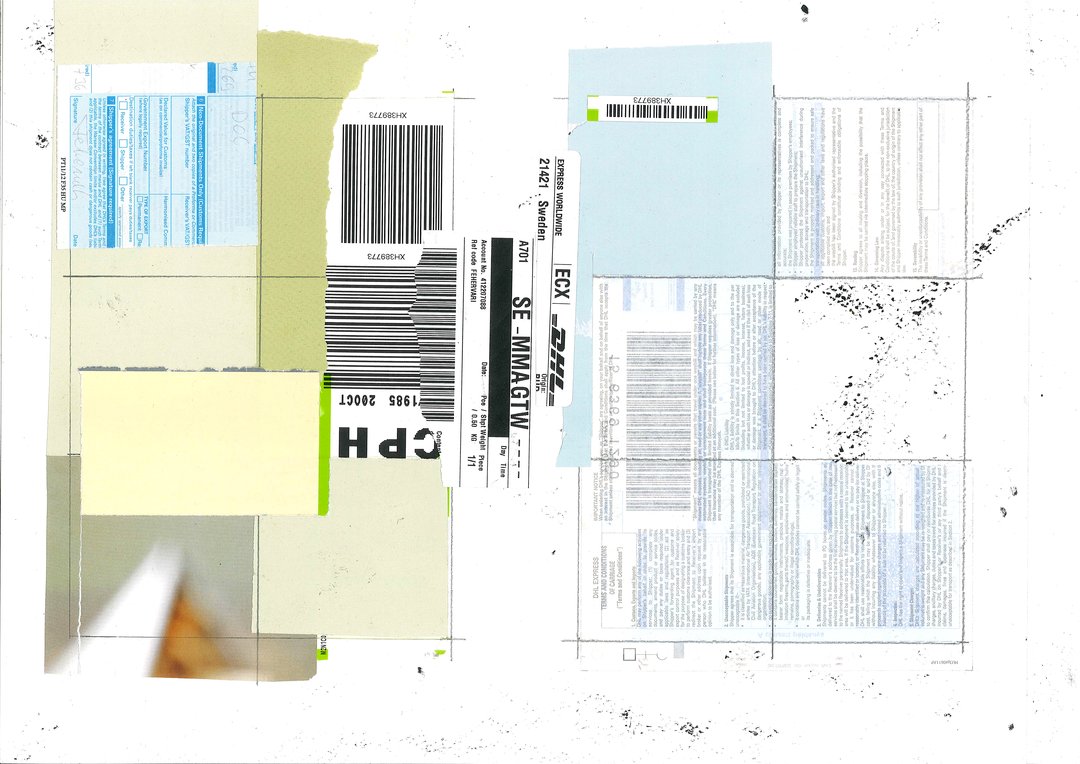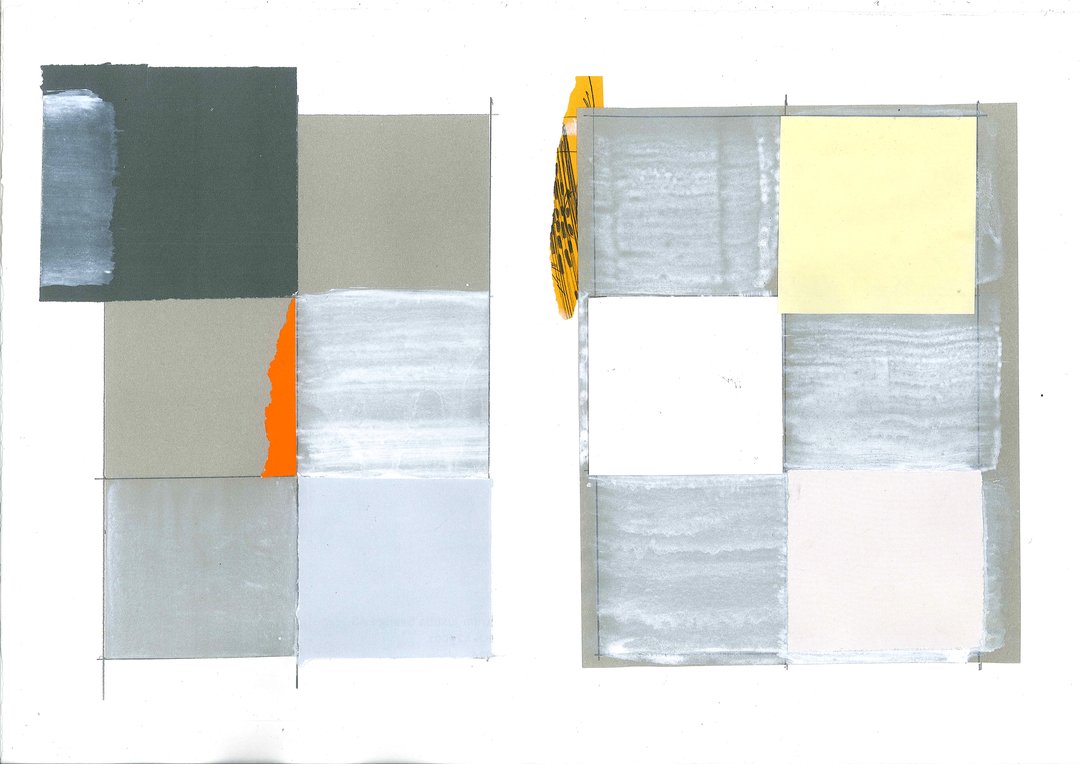Comics have characters, places and things, a plot with events no matter how surreal. From Batman to the latest hipster wildness, characters take action in a world. Comics telling those stories is the same practice that Homer engaged in around a fire, the creation of empathy, narrative suspense, and fascination. If you remove the characters, the empathy, the narrative drive traditionalists think there is nothing there. But it’s a rich nothing that has paper, ink, paint, a cartoonist, a reader, pages, things that make a book. Can that basic of a book exist outside of narrative traditions?
Alan Haverholm’s “When the Last Story is told”, is a 61 page graphic novel. It has no words, a six-panel grid and pages that look like late minimalism, others pages look like action painting, still more are paper and or photo collages.
You can’t consume this like a traditional comic, with no words you can’t even read it. As you you turn pages you have to ask yourself why? In a book, 61 collages become one object. As one object each panel now has a relationship with all the other panels. The first page with juicy thick white paint built over collaged paper declares itself as “Art” these days. A textural stamped black smudge runs out underneath panel 2 and leads the eye to turn the page.
The first spread is built on two sheets of torn drawing paper, 1 brown, 1 grey, with the six panel grid drawn on top of them. Both pages have a base of collage with paint brushed across the whole panel mostly covering up the collage but letting layers of it peak through. With the first spread he actually explores the color palette of the book, white black light grey and brown drawing papers a royal dark blue and a burnt orange. The dark rich colors are in one whole panel, the royal blue looks back to Ad Reinhardt’s blue square painting.
The next spread uses white paint even more so to cover the collage in all three and we get one panels of gestural blobs in black hearkening back to abstract expressionism and the fifth is an orange circle in a black line covered in scraped white. With the smeared gestures it’s hard not to think of zen calligraphy and the drawing of the circles.

There’s a spread of splatter panels intercut with panels that are collages of photos. The photos seem to be texture, interiors, the incidentals a camera catches when it’s pointed at a subject or the carpet taken when it’s left on and pointed downwards. The photo panels build to a full page splash that an interior, possibly a work space which the six panel grid is drawn but then a lighter burnt orange corner holds a shot of clouds that overlaps the bottom four panels. Making the panel lines feel like a crucifix.
Another small chunk of light green paper sits over the bottom right corner, saying it’s time to turn the page. Which reveals a spread of stark black and white spread. The right pages second panels has a bar of orange peeping out over a scrim of paper. The first page is a checkerboard of dark and light texture, stamped, gestural and sprayed.
By placing all of these painting into a book, giving us a rigorous grid to deal with, Haverholm makes you wake up and look at a comic. Almost all comics tell you how to feel, you are locked by the narrative into not thinking you just consume the story line. The drawing is meaningless. Drawing is just a representation of a character. Line, form, color, the handling of paint is just decoration on the characters. Even in the most painted of comics it’s just a mess of artifice and Photoshop to say look how cool I am. But in this all we have to understand why this book is the artist making choices. And I as the reader am left to invent my own stories about what has happened, why the artist did this. What does the orange mean exactly? That dark royal blue that makes me think of Ad Reinhardt, a 20th century painter who pursued a minimal art that became all black paintings of six squares barely perceptible visual meditations. Does the artist even know Reinhardt’s work? Or are his six panels range across the techniques of modernism, collage gestural abstraction and minimalism.
Reading fiction develops your empathy as you meet new people. Most comics are trapped in this pattern, the reader is never asked to engage beyond the level of a college academic. “When the Last story is told” demands you awake and become alive to another’s existence. You have to walk in his shoes and experience the making of the drawings as they are recorded to the page. The reader has to look and engage with another real human being who has made this work. As in life, there are no heroes, there’s just another day, filled with trauma, joy, death and life. You can’t be entertained by empathy, by the hero overcoming their obstacles. I have to make the meaning out of the book. I have to wake up, think and be alive in the moment.
Waking up it’s what we should all do, that’s what this book asks of you.
